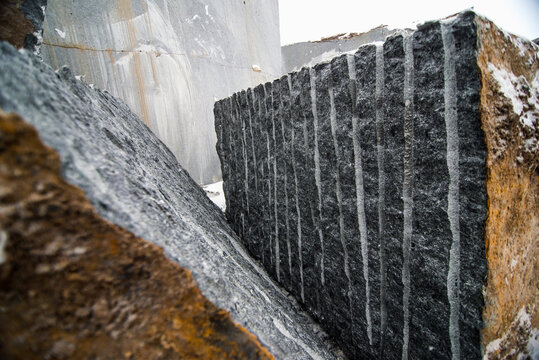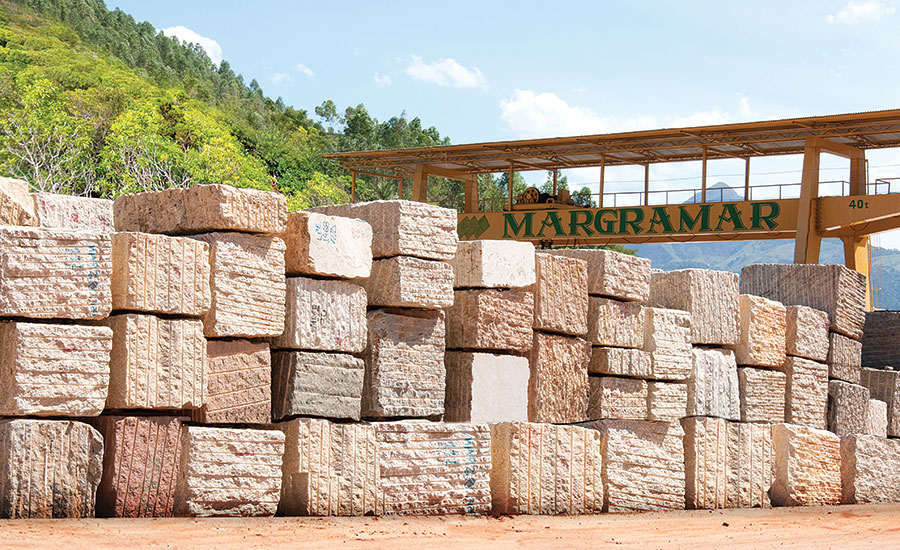Uncovering the Rich Background and Lasting Practices of Granite Quarrying
As we stand on the precipice of revealing the intricate tapestry of granite quarrying, a trip with time reveals not just the physical act of removing stone but likewise the social and historic relevance woven right into the very fabric of this technique. From the old beginnings that laid the structure for modern quarrying techniques to the lasting methods that are forming the future of this sector, each carve mark on granite surface areas tells a story waiting to be uncovered (granite quarries in south africa). The tradition of granite quarrying extends far beyond plain removal; it is a testament to human resourcefulness, strength, and the enduring allure of this impressive rock
Old Beginnings of Granite Quarrying
Dating back to old people, the method of quarrying granite has been an important part of human background and building innovation. The earliest evidence of granite quarrying go back to ancient Egypt, where large pyramids and complex sculptures were crafted from this sturdy stone. The Egyptians made use of primitive tools to extract granite blocks from quarries, showcasing the significance of this material in their significant building and constructions.
Moving on in history, the Greeks also made significant contributions to the quarrying of granite. The Greeks used granite in different architectural marvels, such as temples and statues, demonstrating their skill in shaping and carving this hardy stone. The Romans further refined the techniques of quarrying granite, employing advanced tools like chisels and hammers to remove and form granite for their legendary frameworks.
Via the centuries, the method of quarrying granite has actually progressed, with contemporary technologies enhancing efficiency while maintaining the timeless allure of this all-natural stone - granite quarries in south africa. From ancient worlds to contemporary contractors, the legacy of granite quarrying remains to form our globe
Development of Quarrying Methods
The advancement of quarrying methods has been marked by a continuous development towards higher efficiency and accuracy in removing granite. Early quarrying methods entailed hands-on labor with standard tools such as blades, hammers, and wedges to extract granite blocks from the earth.
In even more recent times, the introduction of machinery reinvented the quarrying industry, allowing much faster extraction prices and increased performance. Technologies such as ruby wire saws, high-pressure water jets, and pneumatic drills have become standard in modern quarries, enabling accurate cutting and lowered waste. Improvements in computer-controlled tools and 3D modeling have actually optimized quarrying operations, leading to very little ecological influence and boosted sustainability methods. As the demand for granite continues to increase, the development of quarrying methods continues to be indispensable to conference industry needs effectively and sustainably.
Cultural Importance of Granite
Granite holds a profound cultural significance across numerous human beings as a result of its long-lasting existence in architectural masterpieces and admired monuments. From the magnificent pyramids of Egypt to the intricate carvings of the Angkor Wat holy place in Cambodia, granite has actually been a material of choice for sharing majesty and long life in cultural heritage. In ancient Rome, granite columns adorned holy Web Site places and public official site buildings, signifying strength and permanence. The cultural significance of granite prolongs beyond its physical qualities; it symbolizes strength, security, and timelessness, making it an icon of enduring traditions and customs.

Lasting Practices in Quarrying
Among the rich background of granite quarrying and its cultural importance exists an expanding emphasis on lasting practices within the market. As ecological understanding and problems concerning resource depletion have increased around the world, the quarrying sector has progressively embraced lasting approaches to minimize its effect on the atmosphere and bordering neighborhoods.

Furthermore, improvement and rehabilitation of quarry websites post-extraction are integral to sustainable methods. By bring back quarried locations to an all-natural or beneficial state, such as creating wild animals environments or recreational spaces, quarriers can counter the ecological footprint of their operations and add favorably to the neighborhood ecosystem.
Heritage of Granite Quarrying
With a historical background steeped in workmanship and commercial progression, what enduring effect has granite quarrying left on the landscape of contemporary culture? The tradition of granite quarrying transcends simple removal methods; it has shaped building wonders, urban landscapes, and cultural heritage worldwide. The durable nature of granite has actually made it a favored selection for monuments, buildings, and infrastructure, standing as a testament to the skill and virtuosity of quarry employees throughout generations.
Furthermore, the financial impact of granite quarrying can not be ignored. The sector proceeds to give job opportunity and look at this site drive regional economic climates in regions where granite removal prevails. It has actually likewise spurred technological improvements in quarrying techniques and tools, resulting in a lot more effective and lasting methods.
In terms of sustainability, the legacy of granite quarrying consists of initiatives to reduce ecological influences through recovery projects and liable resource monitoring. By stabilizing financial interests with ecological stewardship, the sector aims to make certain that future generations can remain to gain from this long-lasting natural source.
Final Thought
